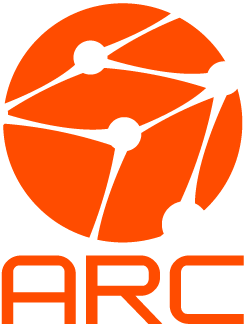
The European Organization for Nuclear Research, known as CERN, is an intergovernmental organization that operates the largest particle physics laboratory in the world. Established in 1954, it is based in a northwestern suburb of Geneva, on the France–Switzerland border. It comprises 23 member states. Israel, admitted in 2013, is the only non-European full member. CERN is an official United Nations General Assembly observer.

Geant4 is a platform for "the simulation of the passage of particles through matter" using Monte Carlo methods. It is the successor of the GEANT series of software toolkits developed by The Geant4 Collaboration, and the first to use object oriented programming. Its development, maintenance and user support are taken care by the international Geant4 Collaboration. Application areas include high energy physics and nuclear experiments, medical, accelerator and space physics studies. The software is used by a number of research projects around the world.

ROOT is an object-oriented computer program and library developed by CERN. It was originally designed for particle physics data analysis and contains several features specific to the field, but it is also used in other applications such as astronomy and data mining. The latest minor release is 6.28, as of 2023-02-03.

LHC@home is a volunteer computing project researching particle physics that uses the Berkeley Open Infrastructure for Network Computing (BOINC) platform. The project's computing power is utilized by physicists at CERN in support of the Large Hadron Collider and other experimental particle accelerators.
GEANT is the name of a series of simulation software designed to describe the passage of elementary particles through matter, using Monte Carlo methods. The name is an acronym formed from "GEometry ANd Tracking". Originally developed at CERN for high energy physics experiments, GEANT-3 has been used in many other fields.
ABINIT is an open-source suite of programs for materials science, distributed under the GNU General Public License. ABINIT implements density functional theory, using a plane wave basis set and pseudopotentials, to compute the electronic density and derived properties of materials ranging from molecules to surfaces to solids. It is developed collaboratively by researchers throughout the world. A web-based easy-to-use graphical version, which includes access to a limited set of ABINIT's full functionality, is available for free use through the nanohub.

Advanced Resource Connector (ARC) is a grid computing middleware introduced by NorduGrid. It provides a common interface for submission of computational tasks to different distributed computing systems and thus can enable grid infrastructures of varying size and complexity. The set of services and utilities providing the interface is known as ARC Computing Element (ARC-CE). ARC-CE functionality includes data staging and caching, developed in order to support data-intensive distributed computing. ARC is an open source software distributed under the Apache License 2.0.
The CERN Program Library (CERNLIB) is a collection of general purpose software libraries and program modules for scientific computing, developed at the European Organization for Nuclear Research CERN. The application area of the library focuses on physics research, in particular high energy physics, involving general mathematics, data analysis, detectors simulation, data-handling, numerical analysis, and others, applicable to a wide range of scientific problems. Many modules are written in the FORTRAN 77 language.

Ian Philip Grant, DPhil; FRS; CMath; FIMA, FRAS, FInstP is a British mathematical physicist. He is Emeritus Professor of Mathematical Physics at the University of Oxford and was elected a fellow of the Royal Society in 1992. He is a pioneer in the field of computational physics and is internationally recognised as the principal author of GRASP, the General Relativistic Atomic Structure Program.
FLUKA is a fully integrated Monte Carlo simulation package for the interaction and transport of particles and nuclei in matter. FLUKA has many applications in particle physics, high energy experimental physics and engineering, shielding, detector and telescope design, cosmic ray studies, dosimetry, medical physics, radiobiology. A recent line of development concerns hadron therapy.
Computational particle physics refers to the methods and computing tools developed in and used by particle physics research. Like computational chemistry or computational biology, it is, for particle physics both a specific branch and an interdisciplinary field relying on computer science, theoretical and experimental particle physics and mathematics. The main fields of computational particle physics are: lattice field theory, automatic calculation of particle interaction or decay and event generators.
The automatic calculation of particle interaction or decay is part of the computational particle physics branch. It refers to computing tools that help calculating the complex particle interactions as studied in high-energy physics, astroparticle physics and cosmology. The goal of the automation is to handle the full sequence of calculations in an automatic (programmed) way: from the Lagrangian expression describing the physics model up to the cross-sections values and to the event generator software.
MINUIT, now MINUIT2, is a numerical minimization software library developed at the European Organization for Nuclear Research (CERN). It provides several algorithms that search for parameter values that minimize a user-defined function, and compute confidence intervals for the parameters by scanning the function near the minimum.

The Abdus Salam Centre for Physics, is a federally-funded research institute and national laboratory site managed by the Quaid-i-Azam University for the Ministry of Energy (MoE) of the Government of Pakistan.
GridPP is a collaboration of particle physicists and computer scientists from the United Kingdom and CERN. They manage and maintain a distributed computing grid across the UK with the primary aim of providing resources to particle physicists working on the Large Hadron Collider (LHC) experiments at CERN. They are funded by the UK's Science and Technology Facilities Council. The collaboration oversees a major computing facility called the Tier1 at the Rutherford Appleton Laboratory (RAL) along with the four Tier 2 organisations of ScotGrid, NorthGrid, SouthGrid and LondonGrid. The Tier 2s are geographically distributed and are composed of computing clusters at multiple institutes.

Mark Galassi is a physicist, computer scientist, and contributor to the Free and open-source software movement. He was born in Manhattan, grew up in France and Italy, and lives in Santa Fe, New Mexico.
Torbjörn Sjöstrand is a Swedish theoretical physicist and a professor at Lund University in Sweden, where he also got his PhD in 1982. He is one of the main authors of PYTHIA, a program for generation of high-energy physics events.
PLUMED is an open-source library implementing enhanced-sampling algorithms, various free-energy methods, and analysis tools for molecular dynamics simulations. It is designed to be used together with ACEMD, AMBER, DL_POLY, GROMACS, LAMMPS, NAMD, OpenMM, ABIN, CP2K, i-PI, PINY-MD, and Quantum ESPRESSO, but it can also be used to together with analysis and visualization tools VMD, HTMD, and OpenPathSampling.

ms2 is a non-commercial molecular simulation program. It comprises both molecular dynamics and Monte Carlo simulation algorithms. ms2 is designed for the calculation of thermodynamic properties of fluids. A large number of thermodynamic properties can be readily computed using ms2, e.g. phase equilibrium, transport and caloric properties. ms2 is limited to homogeneous state simulations.








